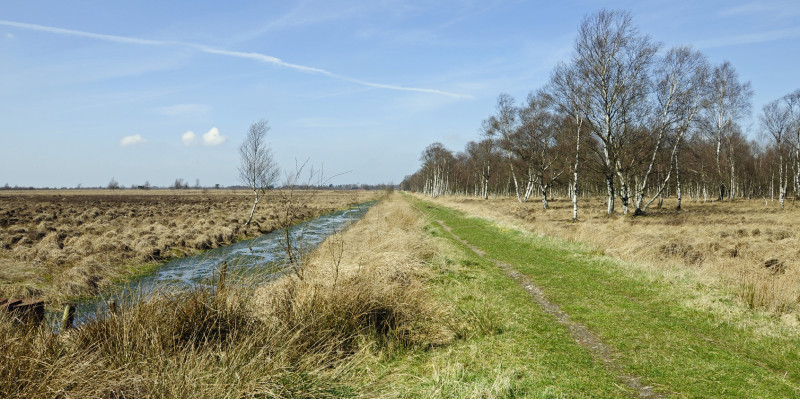More than 92 percent of Germany’s peatlands have been drained, of which nearly three quarters are used for agriculture (farmland or pasture). Although they make up only 7 percent of agricultural land, they account for about 37 percent of all emissions from the agricultural sector. Rewetting these areas can significantly reduce emissions but the effort faces challenges. For one, there must be enough water available to keep soils wet enough. Buildings or roads which cross peatland soils can impair or prevent rewetting. In addition, the majority of peatlands are privately owned and are used for commercial purposes.
Rewetted land can no longer be used for potato, grain or maize cultivation nor is pastoral stockfarming possible on land which has a water level that is optimal for the climate. However, this does not jeopardise food security. Peatland soils account for only a small share of agricultural land (7%), whereas nearly three times the amount of cropland is currently used not to grow food but for the cultivation of biofuel crops such as maize and rape.
Rewetting is a major undertaking for owners and land managers, one that should be implemented voluntarily according to the German government's National Peatland Protection Strategy. Therefore, there is a need for incentives to rewet peatlands, especially those used for agricultural purposes. One such incentive can be the possibility to continue using rewetted areas in a way that is adapted to the increased water level. One such climate-friendly after-use is paludiculture, which is explicitly provided for in the Action Plan on Nature-based Solutions for Biodiversity and Climate and the National Peatland Protection Strategy.
Paludiculture cultivation restores peatland ecosystems. Unlike with renaturation, rewetted soils are suitable for commercial paludiculture. Financial support for paludiculture can therefore be an incentive for stakeholders to rewet agricultural areas. In paludiculture, reeds, reedmace and sedges can be cultivated and their biomass used to make insulation and other building materials. Black alder can be cultivated and used in forest management. Rewetted land is also suitable for water buffalo grazing.
A study by DUENE e.v. and UBA analysed the potential, constraints and costs of rewetting. It proposed solutions, highlighted training and education offers, and provided advice on how to establish supply chains for paludiculture products. It also highlighted financial incentive tools that can promote a switch to paludiculture. The study indicated that the current legal and funding framework requires great financial incentives to motivate stakeholders to voluntarily rewet peatlands used for agriculture.
 Click to enlarge
Click to enlarge
